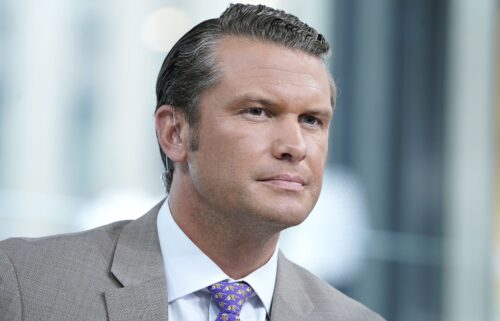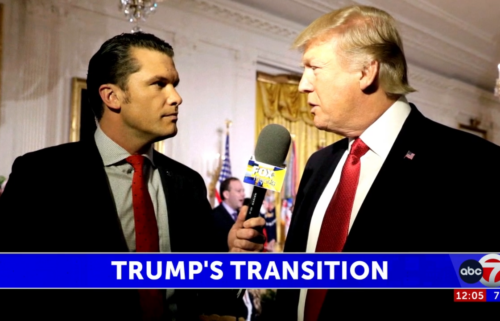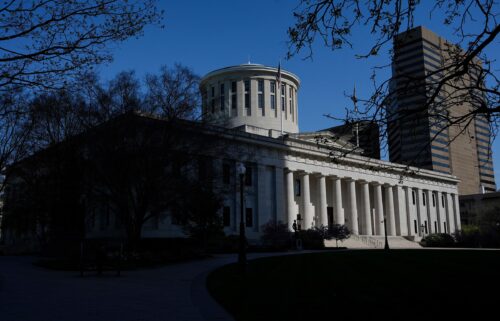The key demographics of the Democratic Party are fragmenting

The continuing uncertainty in the Democratic presidential primary has a hole the size of Barack Obama at its center.
One reason the race remains so unsettled is that none of the contenders has reassembled the winning coalition of groups that Obama coalesced during his 2008 run to the nomination, a model that Hillary Clinton largely followed to capture the prize in 2016.
Instead, only two months before the first voting begins in Iowa, the principal components of the Democratic coalition are fragmenting, with such key demographic groups as whites with and without college degrees, African Americans and Hispanics all tilting toward different contenders.
“The vote is more dispersed than it has been before,” says longtime Democratic strategist Tad Devine. “In ’08, Obama was winning young voters, African Americans and upper-income, upper-educated whites; Hillary was doing much better with blue-collar men, Latinos and white women. The candidates then had neatly divided the Democratic Party. But this time those main groups … all seem to be going in different directions. I think it’s an indication that the race is still wide open.”
As Devine notes, Obama won the nomination in 2008 behind a clearly delineated coalition that held together in all regions of the country. Throughout the primary run, Obama won about four-fifths of African American voters and three-fifths of voters younger than 30, and split college-educated whites almost exactly in half with Clinton, according to a cumulative analysis by Gary Langer of ABC News of all the exit polls conducted that year. That allowed Obama to withstand Clinton’s big advantages among whites without college degrees, white seniors and Latinos, each of which gave her about three-fifths of their total votes.
Eight years later, Clinton largely followed Obama’s pathway to win the nomination against Sen. Bernie Sanders of Vermont. Like Obama in 2008, Clinton in 2016 won about four-fifths of African Americans and split college-educated whites evenly, according to an analysis by CNN polling director Jennifer Agiesta of all the exit polls conducted that year. Clinton could not replicate Obama’s advantage among younger voters — who broke sharply toward Sanders — but she offset that decline by running well again in most places among Hispanics. Sanders carried most whites without college degrees, but by a narrower margin than Clinton had against Obama.
The Obama coalition
Clinton’s victory over Sanders in 2016 seemed to cement the primacy of what some in the party called the “Obama coalition,” meaning a voter coalition centered on college-educated whites and African Americans. The Obama coalition appeared poised to become even more potent in 2020 because both of its key components have been growing as a share of the primary electorate: Combined, college-educated whites and African Americans accounted for about three-fifths of the Democratic primary votes cast in 2016, up from about half in 2008, according to the analyses of those exit polls.
Given the strong backlash against President Donald Trump among each group, many expect their combined share of the primary vote will rise even further next year. With such considerations in mind, Robby Mook, Clinton’s 2016 campaign manager, spoke for many party strategists when he said to me earlier this year that “I just think this thing will be won (in 2020) by some combination of the Obama coalition, college whites and African Americans.”
But in 2020, none of the leading Democrats have succeeded so far in reconnecting those pieces. Instead, the top contenders have established contrasting beachheads of support among the key demographic groups — and struggled to build bridges to constituencies beyond their strongholds.
The most consistent advantage that any Democrat has established among a major demographic group is former Vice President Joe Biden’s large lead among African Americans, who cast about one-fourth of the 2016 Democratic primary votes. Polls have consistently shown Biden with a commanding lead among black voters, especially older ones. The latest national Quinnipiac University poll put him at 43% among African American voters, roughly four times much as the next closest competitor, Sanders. Surveys by Quinnipiac in South Carolina, Fox News in North Carolina and Survey USA in Georgia have all shown Biden at 44% or more among African American primary voters, and at least 30 percentage points ahead of the next closest Democrat.
In a trend that may be worth watching, Biden didn’t register as big an advantage among black voters in two recent polls of Northern states: a Marquette University Law School poll that showed him and Sanders splitting them about evenly in Wisconsin and a New York Times/Siena College survey that put him around 30% with them in Pennsylvania. (Another NYT/Siena poll did give Biden a Southern-sized lead with African Americans in Michigan.) Among black voters, Biden has clearly benefited from the failure of the two African American candidates, Sens. Kamala Harris of California and Cory Booker of New Jersey, to build a solid base of support. (Harris withdrew from the race Tuesday.)
But Biden, especially in the earliest states, has not established an edge with the other key component of the Obama and Clinton coalitions: well-educated white voters. They are now the biggest bloc in the party, accounting for 36% of its primary voters in 2016. The latest national Quinnipiac poll showed Biden winning about one-sixth of them, notably trailing both Sen. Elizabeth Warren of Massachusetts and South Bend, Indiana, Mayor Pete Buttigieg, who each drew about one-fourth. (The latest national CNN poll showed Biden, Warren, Buttigieg and Sanders closely bunched among those voters.)
Biden has been competitive among college whites in polling in states that vote in late February and early March. He led among those well-educated whites in the recent polls conducted by Fox in North Carolina, Quinnipiac in South Carolina (though only very narrowly) and the University of Texas at Tyler in Texas; he trails Warren narrowly among them in the Marquette poll in Wisconsin, a Public Policy Institute of California survey in California and an OH Predictive Insights poll in Arizona. (All of those results were either publicly released or provided to me by the pollsters.)
The question for Biden is whether those polls are a lagging indicator of his standing among these well-educated white voters, sometimes described as the “wine track” in the Democratic electorate. In Iowa, the state where the race has been joined most intensely, the latest Quinnipiac and CNN/Des Moines Register surveys show Biden lagging badly among these voters, with Warren and Buttigieg battling for the lead. In New Hampshire, Quinnipiac found Biden clinging to a narrow lead with those voters, but drawing only about 1 in 5 of them.
Volatility among well-educated whites
One senior strategist for one of the top contenders, who asked to remain anonymous while discussing the campaign’s internal calculations, said these “wine track” voters have proved to be the most volatile component of the Democratic electorate so far. When Harris, who was expected to be a major competitor for their support, faded over the summer, that allowed Warren to grow, the strategist said; then the shift of more college whites toward Buttigieg helped push Warren’s campaign into reverse.
Both this strategist, and many others working on the race, believe that if Buttigieg and Warren finish well in Iowa, they will be best positioned moving forward to capture the largest share of well-educated whites, with the mayor drawing from those who identify as more moderate and the senator from those on the left. If former New York City Mayor Michael Bloomberg finds an audience for his massive ad blitz, it will likely be among upscale white moderates as well.
Among the current top-tier contenders, Buttigieg and Warren will likely prove the most dependent on maximizing support among white-collar whites.
By contrast, Biden and Sanders are betting more heavily on whites without college degrees, who cast about one-fourth of the 2016 Democratic primary votes, down from about one-third in 2008.
These voters have closely divided in the early polling. Biden has generally led among them, both in national surveys and the polls mentioned above from New Hampshire, South Carolina, North Carolina, Arizona, Texas and Wisconsin. But his margins with them are generally tight. Sanders is often the strongest competitor for those voters; the latest Quinnipiac poll in Iowa showed him leading among them and he placed second in the New Hampshire, North Carolina and Arizona surveys. The Sanders campaign believes these voters will split along a clear generational line, with him running best among blue-collar whites younger than 50 and Biden relying on the oldest members of the group. The Sanders camp believes one key to overcoming Biden will be peeling away some older non-college white women who may be most comfortable with the former vice president culturally but open to Sanders’ sharper-edged economic message.
Still, these voters appear highly unsettled. Warren has led among whites without a college education in some state polls (California) and placed second in others (Texas, Nevada) while Buttigieg has also established an audience among them in Iowa, where he’s been advertising heavily. If Sen. Amy Klobuchar of Minnesota can jump-start her campaign in Iowa, she could compete for these voters too.
Hispanics remain divided
The last big piece of the Democratic mosaic is Hispanic voters. In 2016, they composed about 1 in 10 primary voters. But they constitute a much bigger share in several large states that will vote from late February through mid-March, including Nevada, California, Texas, Florida and Arizona. In pointed contrast to black voters, who have largely consolidated behind Biden, Hispanics remain much more divided.
“At this point … no one has become the runaway favorite among Latinos,” says Matt Barreto, co-founder of Latino Decisions, a Democratic firm that specializes in Latino voters.
If anything, there are signs Hispanics may prove a kind of secret weapon for Sanders. In a recent Fox News poll of Nevada, Hispanics there preferred Sanders over Biden by 7 percentage points. Sanders also led Biden with them by 9 points in a recent Latino Decisions poll of California and doubled the former vice president’s vote among them in the University of Texas at Tyler poll. Sanders narrowly led Biden with Hispanics in a New York Times/Siena poll of Florida, and the two ran even in Arizona, according to the OH Predictive Insights survey.
In 2016, Sanders soundly beat Clinton among Hispanics younger than 30, but he severely faded with older members of the community, exit polls found. Ben Tulchin, Sanders’ pollster, says that this time the senator is showing more appeal across generations.
“There is a cultural connection between Bernie and Latinos,” said Tulchin. “It’s not just the young. His story that his father was an immigrant, that he grew up in a working-class community, and his policy goals … all really resonate with Latinos in a way that came out of 2016 but is setting up Bernie very well in the early states of Nevada and California.”
So far, Warren and especially Buttigieg have shown little appeal for Hispanics. The recent surveys have put Buttigieg among them at 1% in Nevada, 2% in California, 3% in Arizona and 4% in Texas. That compounds the challenge the mayor faces from his weak showings in the polls cited above among African Americans, which ranged from 6% in the recent Texas poll to 2% in North Carolina and Georgia, 1% in Florida and zero in Wisconsin, Michigan, Pennsylvania and, most important, South Carolina.
Race could stay wide open
Many underlying factors in modern presidential politics, particularly the ease of raising money online and the massive increase in media attention to the race, are allowing candidates to stay in the primary race longer than in the past. The prospect that the major voting blocs in the Democratic Party will splinter among the top-tier candidates adds to the possibility of a race that remains wide open much longer than earlier contests.
Biden, with his strong foundation among black voters and competitive positions among blue-collar whites and Hispanics, may be best positioned today to compete broadly across the party. As I’ve written, he’s reaching back before Obama to re-create the “beer track” coalition of working-class whites and minorities that powered Democratic nominees such as Walter Mondale, Bill Clinton and Al Gore.
But, apart from older African Americans, Biden has struggled to generate real enthusiasm among any group, and it’s unclear how much of his support in later states might be dislodged by subpar showings in preponderantly white Iowa and New Hampshire. The working-class whites central to the “beer track” strategy are also a much smaller share of the party electorate than they were under Mondale, Clinton or even Gore.
Obama in 2008, and then Clinton in 2016, rode to victory by fusing the two groups most indispensable to the party’s modern coalition: college-educated whites and African Americans. If no one repeats that feat, the Democratic contenders could spend many months next year trying to piece together a winning coalition from the party’s fragmenting pieces.
This story has been updated with Kamala Harris’ withdrawal from the Democratic primary campaign.




